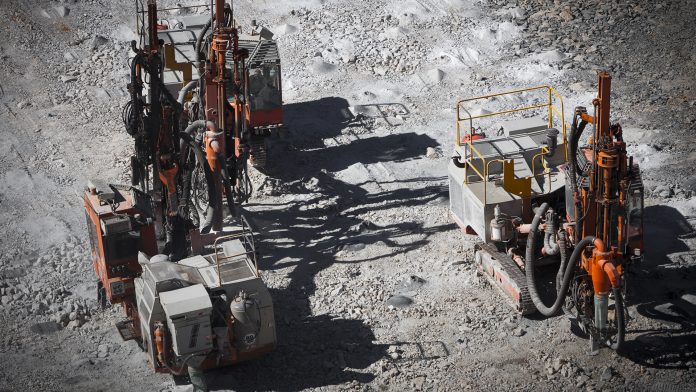Argentina Lithium have reported positive lithium brine values from the second diamond drill hole at its Rincon West Project in Salta Province, Argentina.
The Rincon West lithium mining project covers 2,951.5 hectares of the salar basin, located west of the adjacent Rincon Project, owned by Rio Tinto. The property is currently permitted for up to nine exploration drill holes, and the fourth exploration hole is currently being completed.
Drilling lithium from drill hole RW-DDH-002
As part of their lithium mining project, the company recovered brine from the drill hole RW-DDH-002. Brine was extracted at respective intervals, and ranged from 22mg per litre, to 367mg per litre.
Hole RW-DDH-002 was executed with diamond drilling, permitting the extraction of core samples of the salar basin formations and recovery of brine samples. Drilling was conducted between 7-22 July, stopping at 323 metres depth in igneous basement rock units. Final sampling and lining the hole with two-inch diameter PVC filters and casing were completed by 25 July.
Brine sampling was conducted using a single packer sampling unit during drilling. Upon completion of the lithium mining, selected intervals of the hole were re-sampled with a double packer system, permitting isolation of certain intervals. The packer sampling method allows the collection of brine samples at specific depths while sealing the hole at the top and bottom of the interval.
As anticipated by the exploration team, freshwater layers were found to overlay the much denser concentrated brine aquifer. Recovered brine samples indicate relatively fresh water in the interval 61.3-65.2 metres depth, transitioning to brackish in the interval 67.3-71.2 m depth. Brine concentration increased below this level. A number of additional packer sampling attempts from other intervals did not return a sufficient quantity of brine considered representative for analysis.
“The results of the second exploration hole demonstrate remarkably consistent lithium grades, when compared to the first. RW-DDH-002 results reveal an impressive, concentrated brine aquifer, tested with packer sampling over 77% of the interval between 182 and 305 metre depths, with lithium values ranging from 337 to 367 milligrams per litre,” stated Miles Rideout, Vice President of Exploration.
He added: “Additional concentrated brines with lower lithium contents were also recovered from above this 118-metre interval. Drilling thus far validates that the adjacent lithium salar extends under our properties, with consistently high lithium grades. The drill programme will continue as planned with the aim of delineating an initial lithium mineral resource.”
No casing was required during drilling. Poorly consolidated gravels were logged from the surface to 23m depth, where sandy sediments began. Black and dark sands were logged to 66m depth, at which point sulphates appear, likely indicating the presence of the salar formation. Sandy units with bands of sulphates and gravels were logged from 66m to 90m depth, entering a silt layer logged between 90m and 92m. At 245m, the drill entered aplite (fine-grained igneous rock), displaying varying degrees of fracturing. Sulphates were observed from 66m depth through the sediment units and within some fractures in the aplite. Metamorphosed quartzite was encountered from 293m, the upper 10m with significant fracturing.
The hole was stopped in metamorphosed quartzite at 323m depth. All core samples recovered in lithium mining are retained for logging, and are available for subsequent laboratory evaluation of factors such as total and effective porosity, permeability, and other measurable characteristics of the aquifer formation.
Further analysis of brine samples
Samples of brine were submitted to Alex Stewart International Argentina for analysis, with ISO 17025:2005 certification for the analysis of lithium, potassium, and other elements. Alex Stewart employed Inductively Coupled Plasma Optical Emission Spectrometry (‘ICP-OES’) as the analytical technique for the primary constituents of interest, including boron, calcium, potassium, lithium, and magnesium. Measurements in the field included pH, electrical conductivity, temperature, and density.
The quality of sample analytical results was controlled and assessed with a protocol of blank, duplicate and reference standard samples included within the sample sequence. In addition, 11 samples including one blank and two standards were submitted for re-analysis. All samples were reported to be in the acceptable range. A low-grade and medium-grade reference standard were included in the initial and second submissions. The low-grade reference standard analyses were within the acceptable range of two standard deviations (SD) and with less than 2% relative percent difference (RPD); the medium-grade standard returned results of less than 3 SD, but with a low RPD (1.75% and -3.25%).
Furthermore, two duplicate check samples were submitted to SGS Argentina and also analysed by ICP-OES. Initial results were significantly higher than expected and the samples were re-run in addition to a low-grade standard sample. The lithium grades from the re-analysis of the check samples correlated well with the grades reported by Alex Stewart; however, the standard sample returned a grade 15% below the acceptable lithium value for the standard. Further investigation to determine the cause of this standard failure is ongoing.








